In light of the controversial Jahangirpuri demolitions, a radical argument suggests that if slums are not demolished for a while, we’ll see tremendous growth
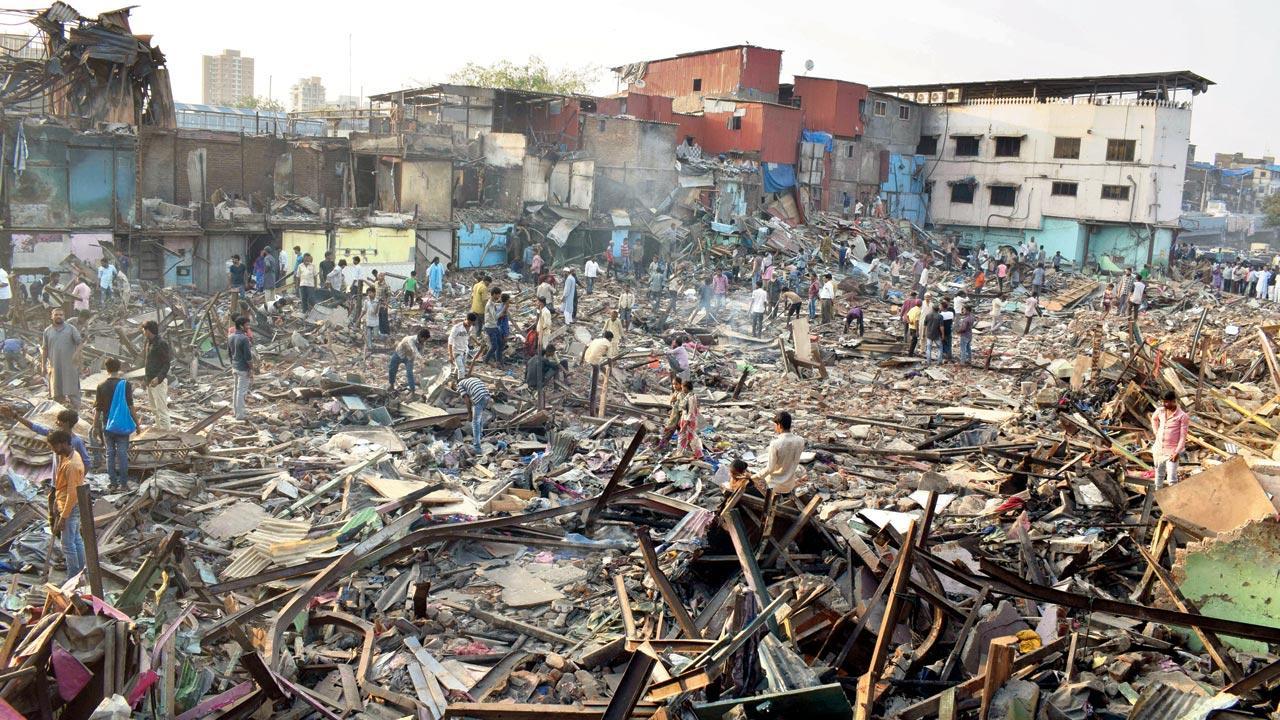
In 2019, the BMC demolished over 178 structures, all encroachments that came in the way of a major storm water drain (SWD) widening project in Bandra. Among these, 96 hutments were at Behrampada slum outside Bandra railway station. Pics/Ashish Raje, Nimesh Dave
Understanding the “economics of slums” is central to Anup Malani’s research. A health and development economist and law professor at the University of Chicago Law School, Malani has long been curious about the bastis of Mumbai. As the founder of a social impact fellowship, the International Innovation Corps, he initiated a “short-lived project” in the slums of the city, along with the Tata Trust. Later, he started a non-profit to think about English education in slums, to improve the vocational prospects of its residents. “That failed also...,” he tells us over a video call. “I realised that before you act, maybe you need to know [the ground reality]. So I started an extensive ethnographic research project to understand why people move to slums, how these informal settlements function, and how does one improve the lives of people there.”
ADVERTISEMENT
The project, initiated by the Tata Centre for Development at the University of Chicago and International Innovation Corps, began in 2016 across 24 slums in seven cities of India, including six slum pockets in Mumbai. It is now nearly complete with research papers and a documentary titled, Basti, on the anvil. “Apart from gathering data, we also did a lot of quantitative work, which included looking at satellite images.” How does one do that? Go to Google Earth, find an existing slum—preferably a new one that has emerged over the last 15 years—and spend some time looking at it, including how it was, many years in the past, he says. “What you’ll find is dramatic growth. You will notice two things happen. Firstly, the area will fill out, as people move in. The second thing you’ll see is that very rapidly, the quality of homes there, improves. To get a sense of whether or not that’s a lot of growth, just think about your life. How much has your building improved in the last 10 years? Have you seen the kind of improvement that goes from living in a tent to owning a concrete structure?” he asks us. “My guess is that most people have not experienced that kind of growth. We usually measure growth in terms of income, but that only leads to increase in consumption; our actual status doesn’t change dramatically.”
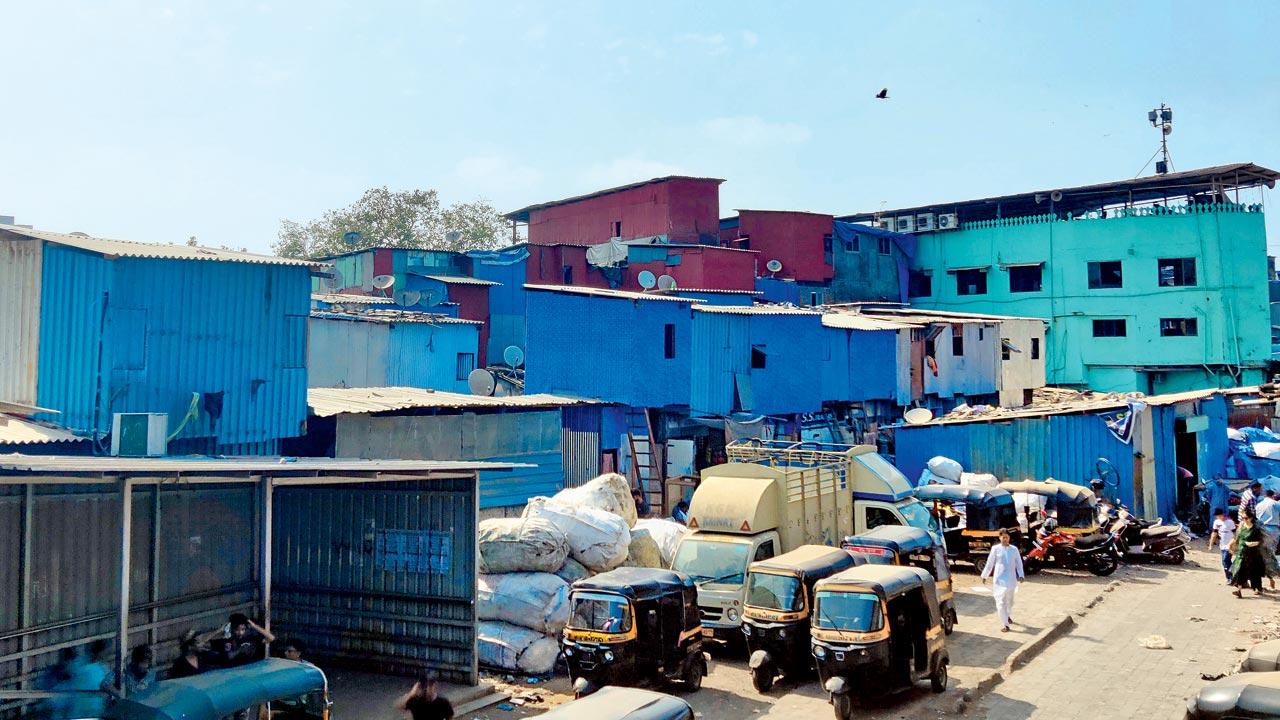 Some of the hutments resurfaced soon after
Some of the hutments resurfaced soon after
Malani’s drawn-out explanation is simply and most importantly to make a case for our slums, and their potential in building the city’s economy. Backed by solid data, he argues that if slums are not demolished for 10 to 20 years, you will see tremendous growth.
Last week’s demolition in North West Delhi’s Jahangirpuri area, despite the Supreme Court’s directions that status quo be maintained, has once again given rise to the debate on whether slum demolitions are a self-defeating exercise. In 2019, Mumbai’s H/East ward office demolished over 178 structures, all encroachments that came in the way of a major storm water drain (SWD) widening project in Bandra. Among these, 96 hutments were at Behrampada slum outside Bandra railway station. Families were given alternate accommodation at Malad and the disease-ridden Mahul, notoriously known as the “human dumping ground,” but many refused to shift. For the longest time, as witnessed by this writer during her daily office commute, people made their beds on this debris, with worn-out sarees knotted on rods, used as partitions. Post the lockdown, undeterred by the threat of another demolition drive, new hutments resurfaced—this time, more resilient multi-storeyed rooms made with brand new corrugated metal sheets. It’s their version of pucca houses. To our mind, there cannot be a more accurate example of what Malani identifies as growth.
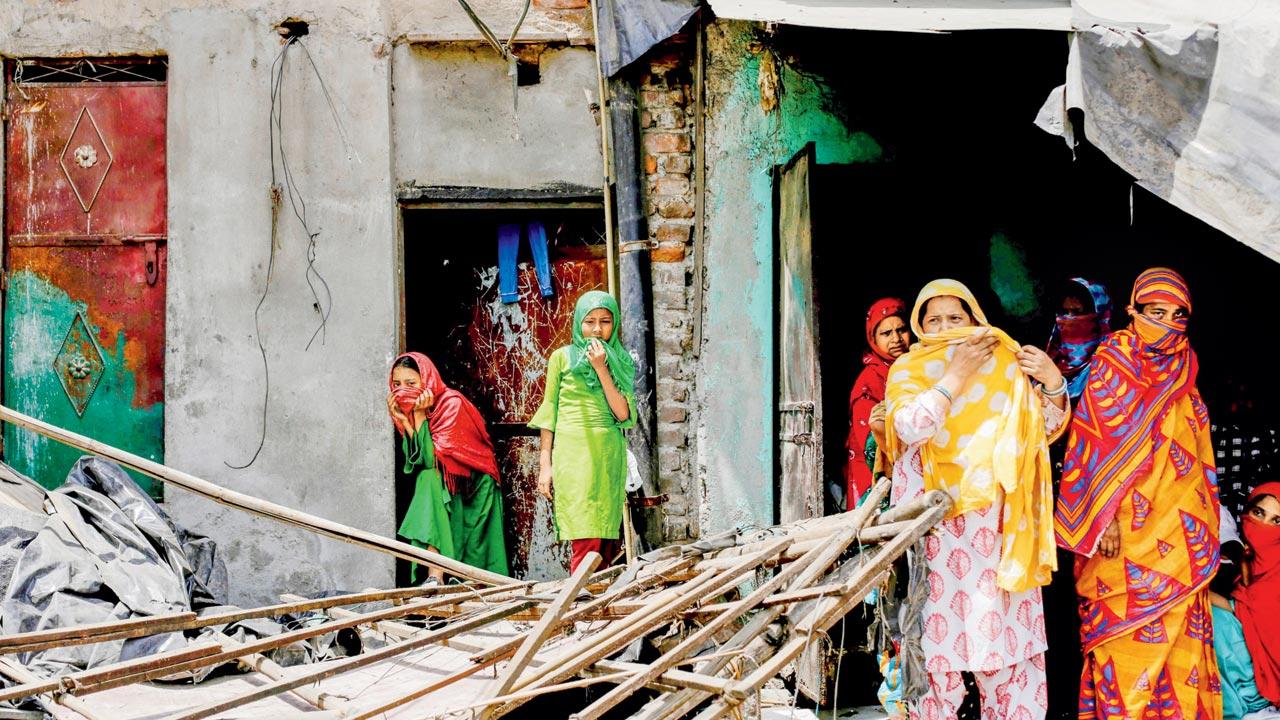 Residents stand near the rubble of demolished construction in New Delhi’s Jahangirpuri neighbourhood. Pic/Getty Images
Residents stand near the rubble of demolished construction in New Delhi’s Jahangirpuri neighbourhood. Pic/Getty Images
But what, demolitions also do, is undo all the efforts of growth. In a brief prepared as Yale Fox International Fellow 2017-2018, Yale University, on Why Demolishing Slums in Indian Cities is Harmful to the Lives and Livelihoods of Impoverished Residents, Dinesh Kataria, had stated that “every cycle of eviction, demolition, and relocations from squatter slums renders thousands of people homeless and jobless. At the same time, these demolitions also break up neighbourhood networks, particularly disrupting the lives of women and children who play important roles in forging of these networks.”
Malani tells us that if we had to do the same Google Earth exercise for a slum that was demolished recently, we’d notice that while they were going through a rapid period of growth, and close to being fully accomplished—which involved becoming concretised—when suddenly demolished, they went down to zero again. “What we are doing is killing their growth,” he argues. “From this, we realise that demolition is the biggest risk that slums face.”
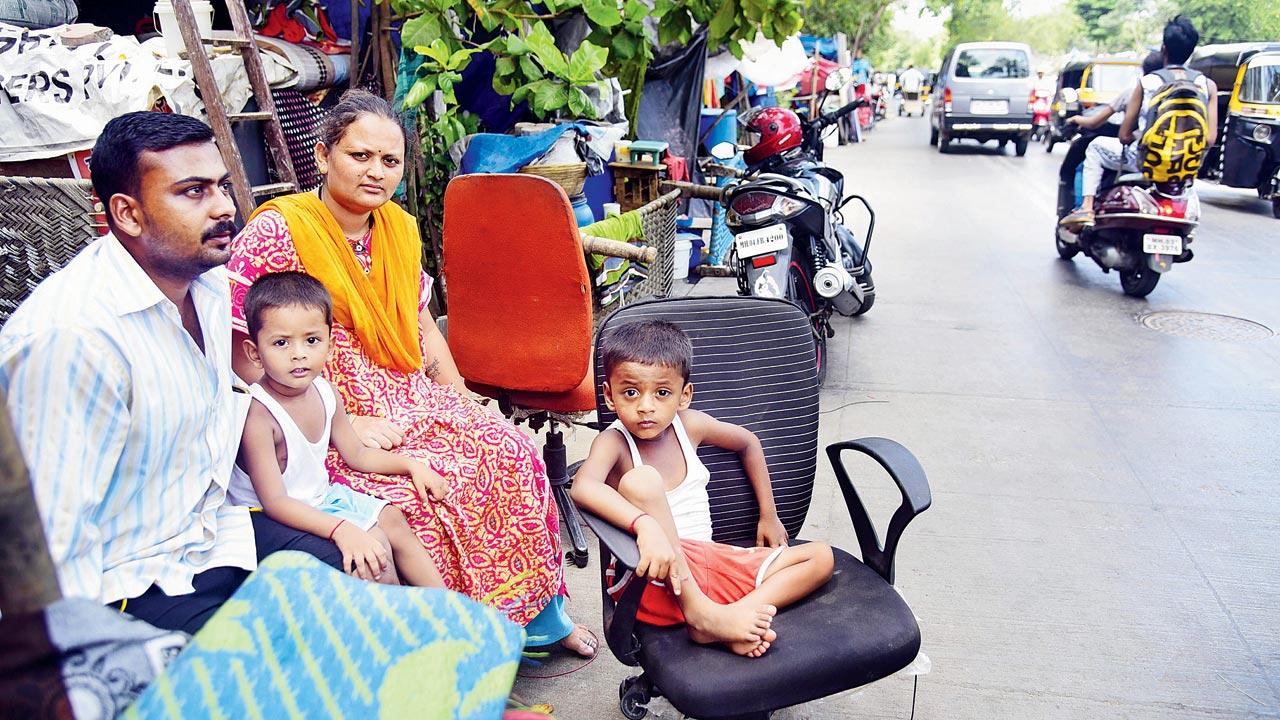 A family of four was left homeless, after their hutment in Vidyavihar was demolished in 2017. Following a Bombay High Court order, at least 700 hutments were torn down along the Tansa pipeline in Ambedkar Nagar and Bhim Nagar, Vidyavihar East between May 13 and 15 that year. File pic
A family of four was left homeless, after their hutment in Vidyavihar was demolished in 2017. Following a Bombay High Court order, at least 700 hutments were torn down along the Tansa pipeline in Ambedkar Nagar and Bhim Nagar, Vidyavihar East between May 13 and 15 that year. File pic
Dikshu C Kukreja, architect, urban planner, environmentalist, and managing principal of CP Kukreja Architects, says that for any fast-developing nation, urbanisation is a natural corollary. “This means more and more people are anyway moving to the cities. Since land is a precious commodity, people cannot afford to have homes of their own. Therefore, a large strata of the society, ends up living in these informal settlements.” This, he says, needs to be kept in mind, when we start thinking about what to do with our slums. “The urban migration cannot be wished away and therefore, we need to find solutions for sustainable, livable and humane habitat for them... demolition is just a knee-jerk reaction.”
Anthropologist Rahul Srivastava and Swiss urban planner Matias Echanove have been working with artisans and local builders in Dharavi, as well as other homegrown neighbourhoods in the city, on the design of objects and homes. According to Srivastava, “alternatives to slum clearances start with recognising the right of all citizens to urban space irrespective of their ability to ‘purchase’ that right”. “It is for this reason that organised co-operatives based on the right to occupy land [rather than own it] are valid forms of urban spatial use all over the world. They allow residents to improve their habitats over time, thanks to security of tenure. Many towns and cities have grown incrementally over time in this way. Especially in India, where mixed urban settlements typically grew around industries, ports and markets with
people bringing in their skills, labour and families to energise urban life,” he says.
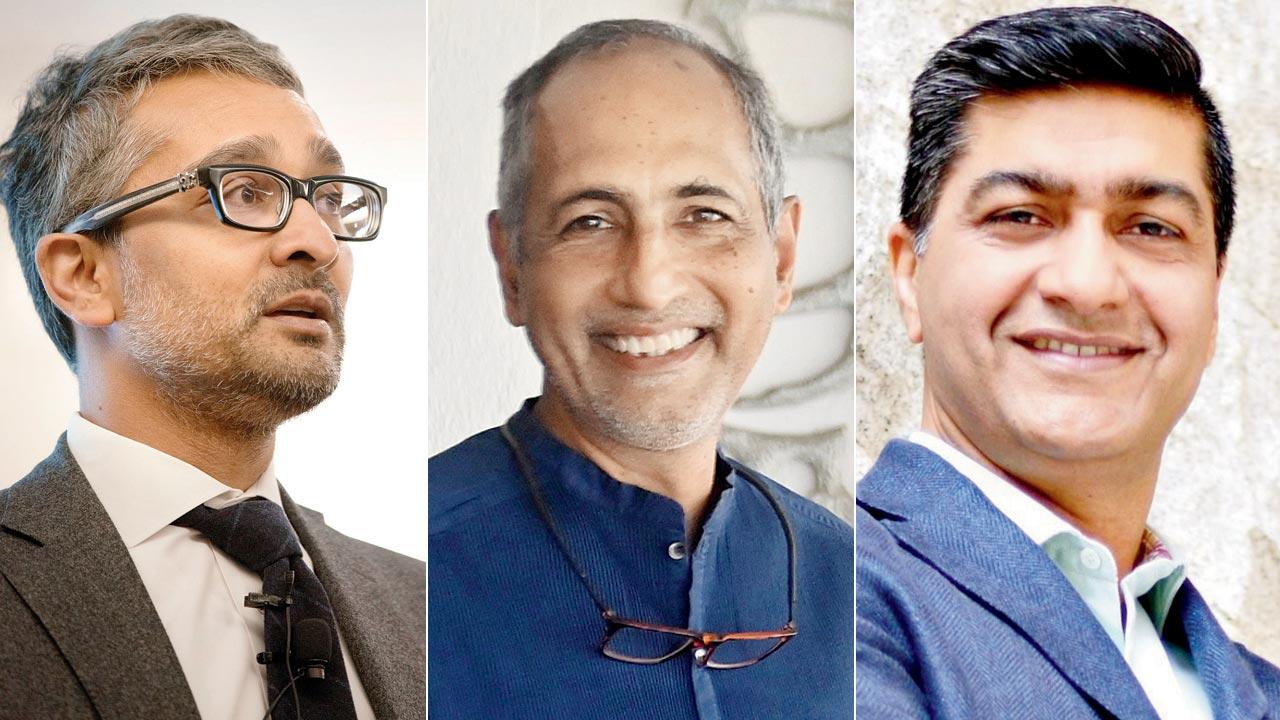 Anup Malani, Rahul Kadri and Dikshu C Kukreja
Anup Malani, Rahul Kadri and Dikshu C Kukreja
The duo’s approach has been to validate this process. “One that deals with urban needs of shelter, accommodation and housing in cost-effective, humane and inclusive ways... That is how neighbourhoods like Dharavi have grown into powerful economic and residential spaces—even though they have rarely been rewarded with the quality civic infrastructure that they deserve. On the contrary, for many decades, neighbourhoods in Dharavi have had to face demolition drives too—on grounds of being illegitimate. And the process has not stopped.”
Srivastava feels that the specific narrative of encroachment enters when a government regime selectively “decides that the negotiations made previously by communities with local authorities to assert their right to live on that space, are no longer valid”. “That is when demolitions become a show of government might that seeks to assert their domination. Unfortunately, they are never successful in the long run, as they represent a language of citizenship which is inevitably exclusive, narrow and unrealistic. They never have, nor will they really succeed in demolishing the essence of urbanness, which is based on inclusivity and diversity through every possible variable—class, community and ethnicity.”
 Rahul Srivastava, Mitu Mathur and Matias Echanove
Rahul Srivastava, Mitu Mathur and Matias Echanove
Echanove says that history offers some of the best solutions. “Just about a 100 years ago, Scottish urban planner Patrick Geddes, who worked in India for over a decade and who was a close friend of Rabindranath Tagore, argued that the kind of slum clearance that was happening at the time in Europe and India was extremely costly to society. It was ‘to the advantage only of the rack-renting interests’. Instead he advocated ‘conservative surgery’ in dense neighbourhoods: clearing had to be as parsimonious as possible, displacing only a few families to create open space for the common good while making sure that these people would be rehoused in the same neighbourhood. Geddes called the method of ‘relieving congestion’ through clearance ‘pretentious but spurious’, motivated not by the will to improve quality of life in the city, but by political ideology.”
His views are shared by Rahul Kadri, partner and principal architect, IMK Architects, who in the past has proposed community-led redevelopment of slums, where slumdwellers self-finance the construction of their own homes through a 30-year affordable EMI model. He doesn’t feel that arbitrary demolitions will lead to the “slum-free” vision for any city. “Even when there are urgent infra projects to be done on encroached land, the ideal way to go about it is to appoint an agency that identifies the patches needed for these projects, and create a transparent plan [that includes clearing only those portions required]. Residents should also be given enough notice [way ahead of time], and ideally relocated to a space within the same slum. Most of the people living here walk to work. They can’t afford to spend time or money on commute.” A home, he says, is not just a pucca structure; its location is central to people’s lives and livelihood.
Over a decade ago, the Delhi Development Authority had commissioned consultants to undertake a study of the slums in Delhi for an in situ slum rehabilitation plan. As part of the initiative, Mitu Mathur, who currently is director, GPM Architects & Planners, and her team, had sent a detailed report on Kathputli Colony, near Shadipur depot in North Delhi. Under the plans, “high-category residential units” were to be built next to slum-dwelling units, with different approach roads. As per the report, 2,800 dwelling units were proposed to be built here, with over half the 5.2 hectare set aside for building 10 towers with 10 floors each. The remaining land was to be used for commercial and remunerative purposes, to be developed later. “Unfortunately, nothing came of it.” The plan was mooted many years after Maharashtra’s 1995 Slum Rehabilitation Scheme, which allowed incentive floor space index (FSI) in the form of tenements for sale in the open market, for cross-subsidisation of the rehabilitation tenements, which were to be provided free to the slum-dwellers. Mathur says that while in situ rehabilitation is often suggested as a solution to slum clearance, her own experience shows that it’s not as easy. “I remember when the proposal was mooted by the DDA and slumdwellers learnt about free houses being distributed, they started calling their relatives [back home] to the city. So, a family of two brothers, overnight became a family of five brothers. We will need a more radical solution to this problem.”
Malani says that the long-term solution to ensure a slum-free city would be to build city infrastructure, which includes sewers, better roads, and policies that allow the city to grow laterally. The more immediate measure would be to restrict demolitions. “Slums need to be able to grow.” Demolitions happen for a number of reasons. Usually, it’s because the government decides that there’s better use for the said land. “Sometimes, the city just does it because it’s capricious, and thinks these slums are an eyesore. At other times, it could be because there’s a politician that sees the slum as a vote-bank, which is not as reliable, and decides to take vengeance by clearing it,” he says, adding that both of these are terrible arguments to raze slums. “Take Rome, for instance.
It’s a city of informal settlements that over time became formal through growth and building better structures. Slums can do that too.”
Consequences of displacement
. Relocation forces children to drop out of school or commute long distances.
. Women’s wages are critical to the survival of working-class families and forced evictions often leave them jobless. Further, women’s participation in the labour market affects their influence in family decisions.
. It leads to disruption of neighbourhood-based organisations and social networks. In an unstable labour market, these networks often act as safety nets for fellow community members in time of temporary joblessness, health issues, and
marital disputes.
Courtesy: Why Demolishing Slums in Indian Cities is Harmful to the lives and Livelihood of Impoverished Residents, Dinesh Kataria; https://scholars.org/
 Subscribe today by clicking the link and stay updated with the latest news!" Click here!
Subscribe today by clicking the link and stay updated with the latest news!" Click here!







